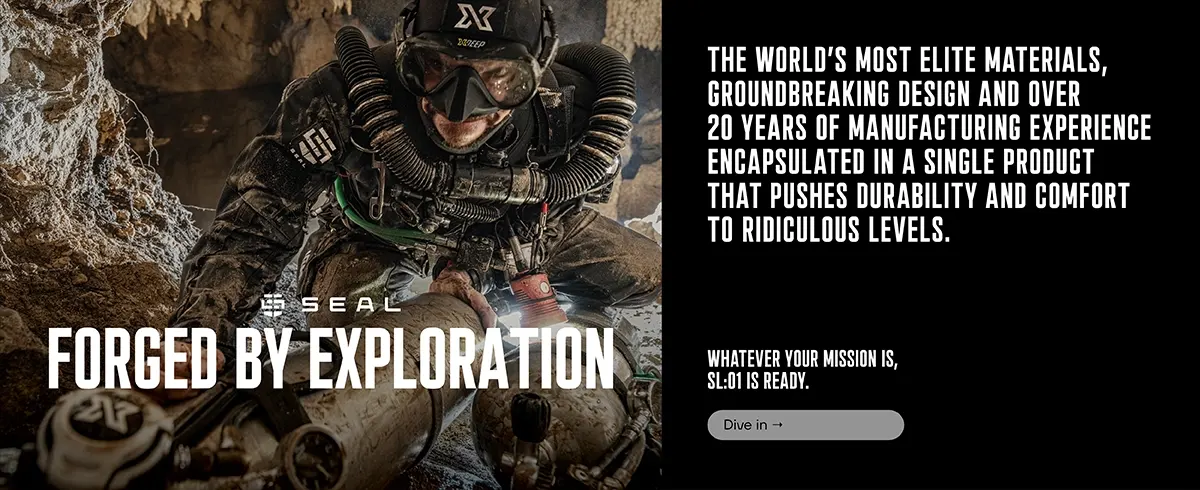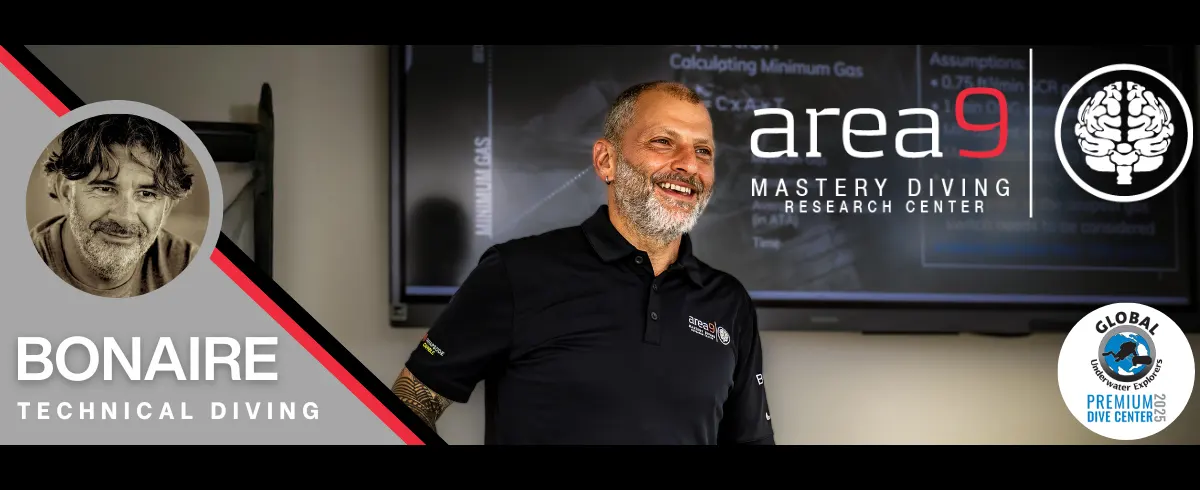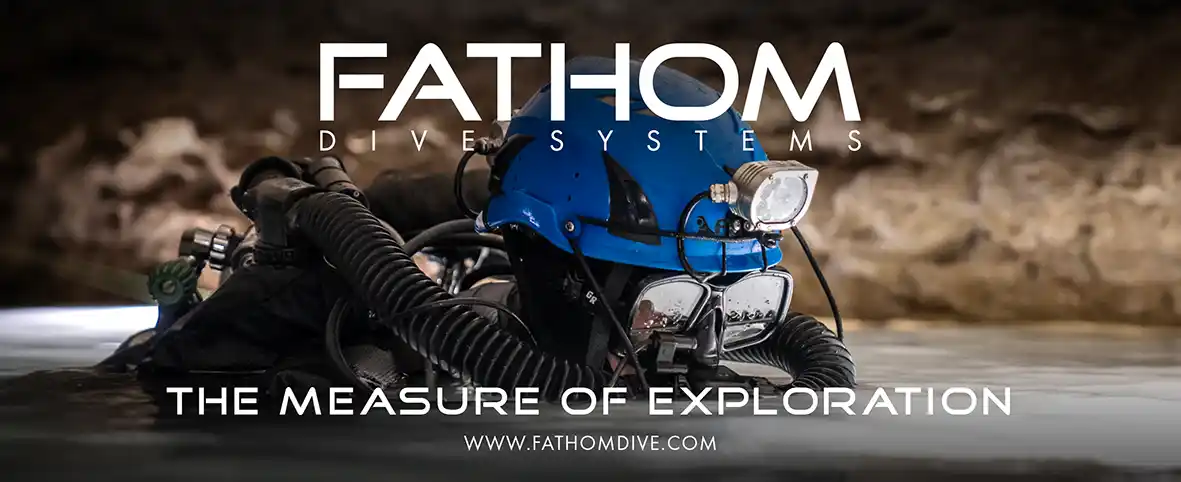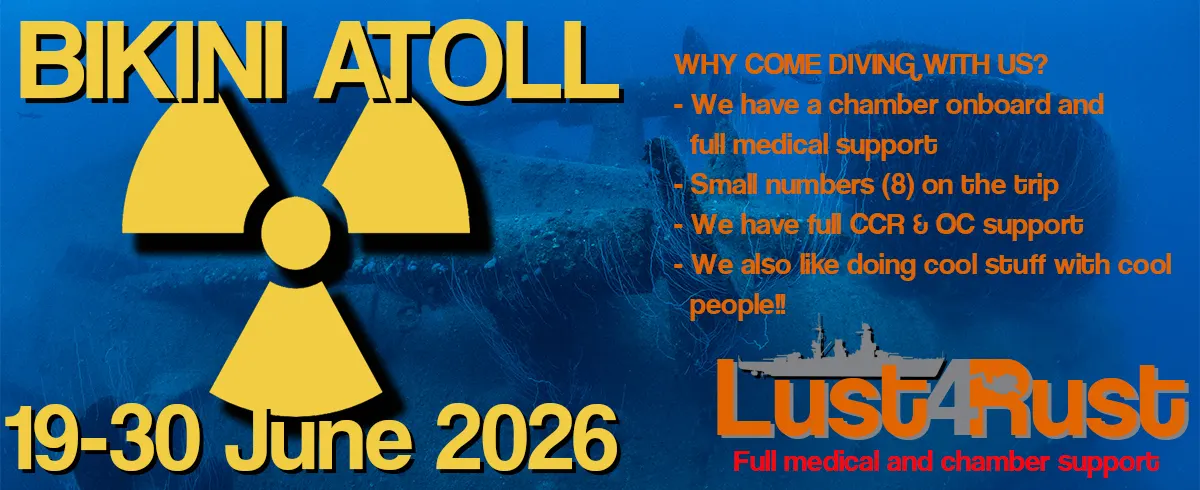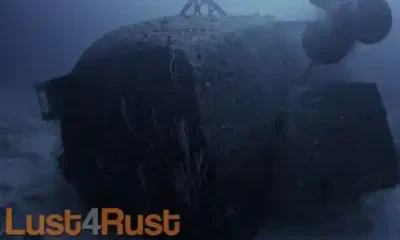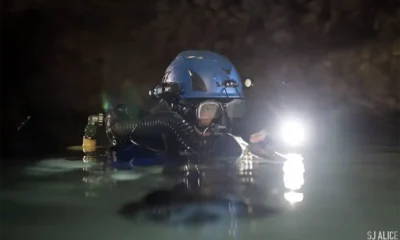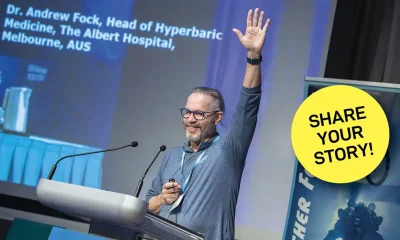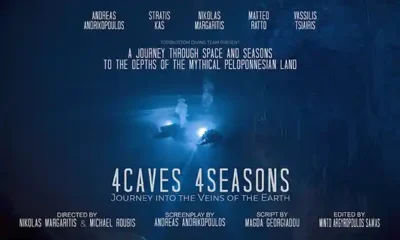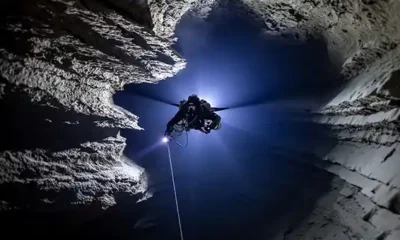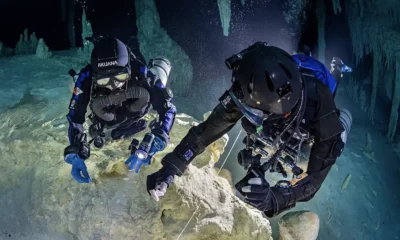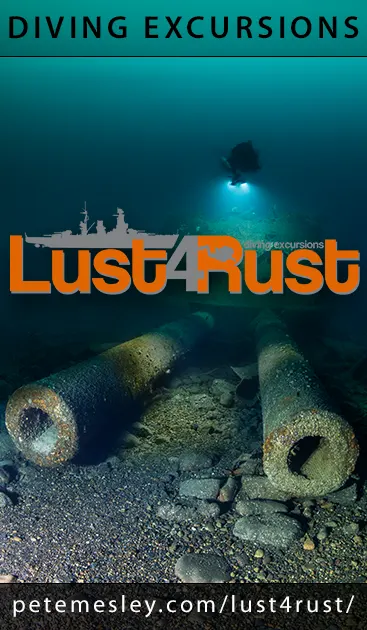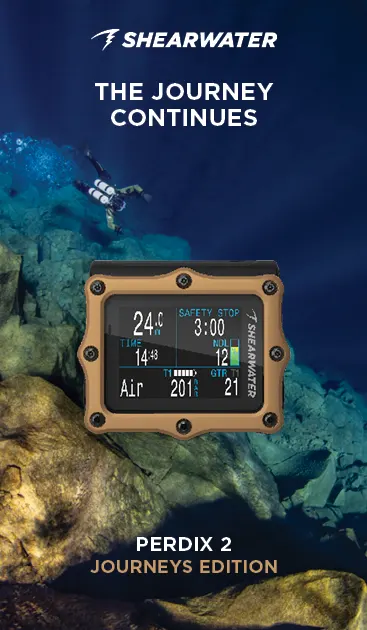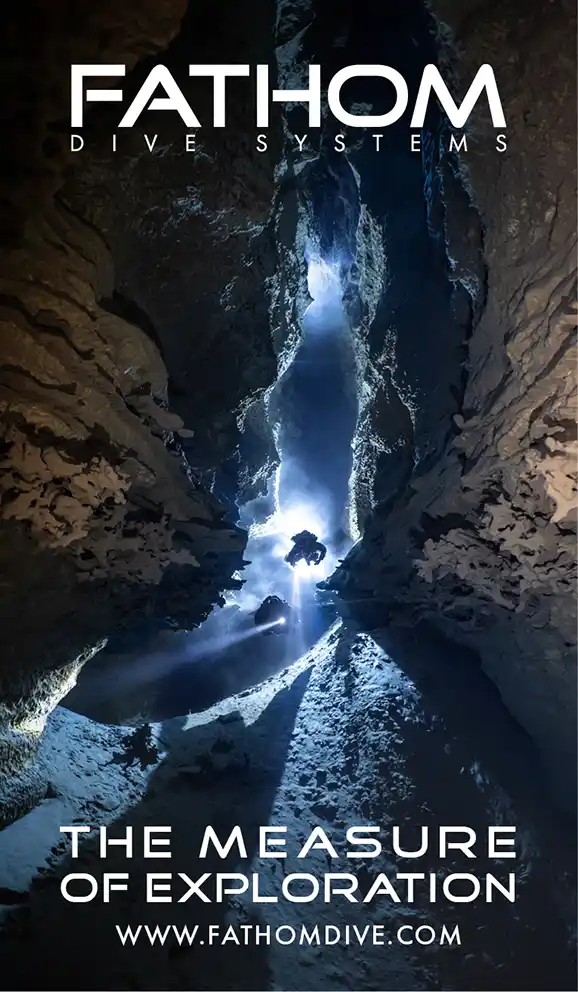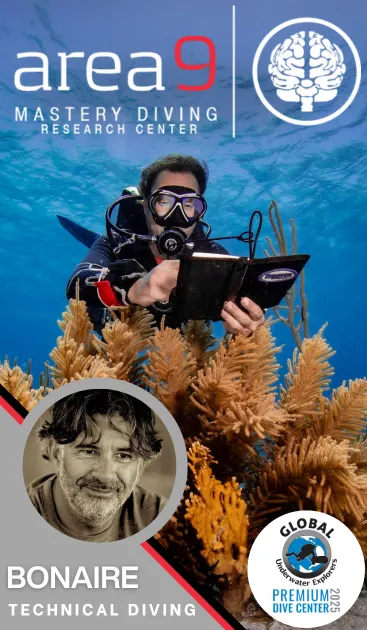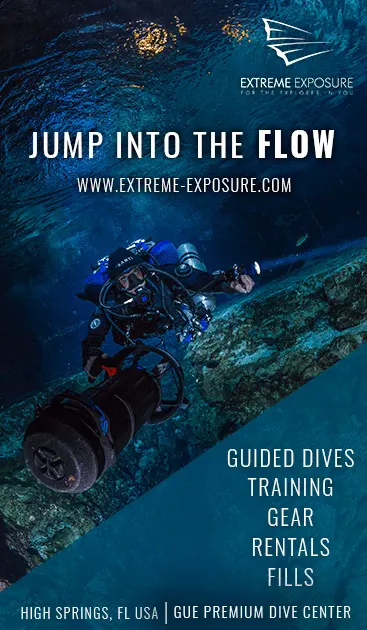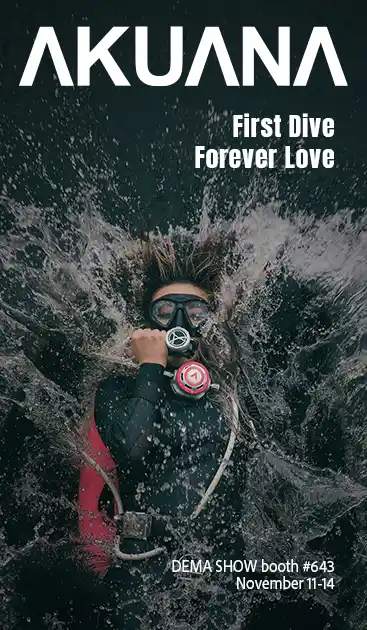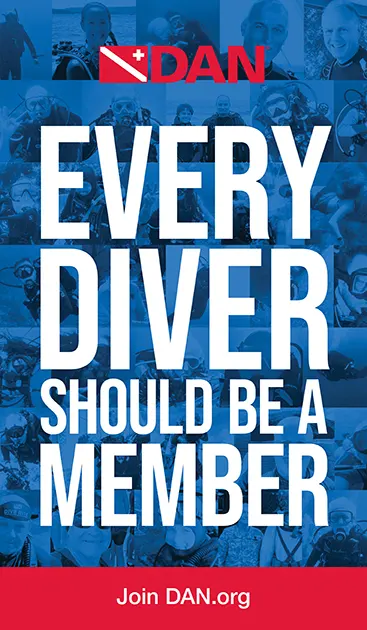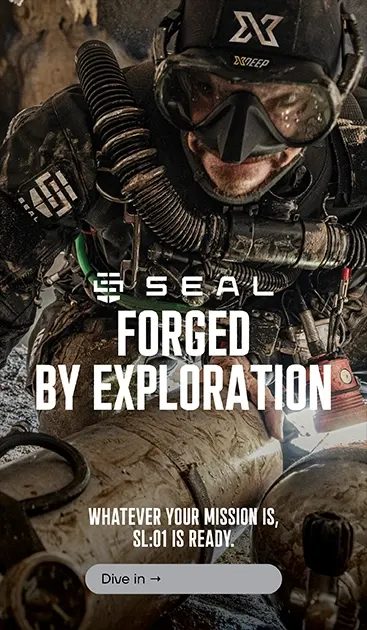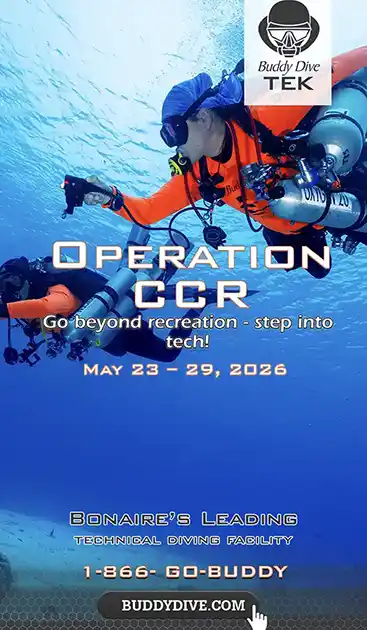
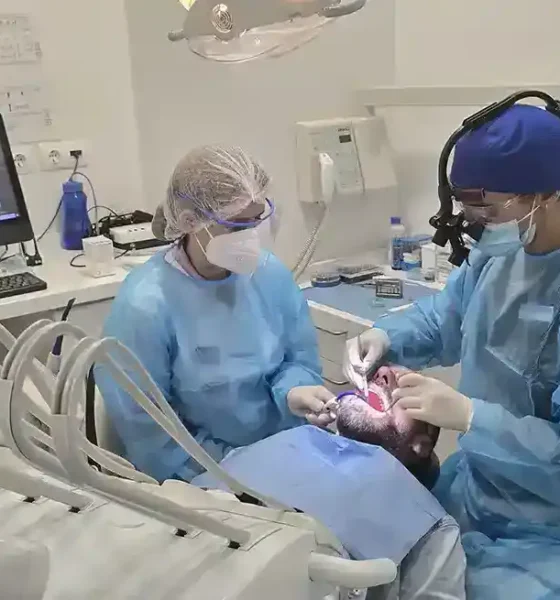
Latest Features
The Hidden Bite of Diving: Why Dentistry Matters Underwater
What do teeth have to do with technical diving? More than most divers realize. From barodontalgia to mouthpiece ergonomics, prosthodontist and CCR diver Ana Gonçalves, DAN Europe Diving Medical Officer & Representative, explores why dentistry is not a mythical unicorn but a critical part of diving medicine.
By Ana Gonçalves, DAN Europe Diving Medical Officer & Representative
When we hear the phrase “diving medicine,” subjects such as undersea and hyperbaric medicine, physiology, biology, and naval and marine science usually come to mind—dentistry being a very far-fetched guess.
Diving dentistry is such a unicorn topic that even I, a CCR diver and prosthodontist—a dentist specializing in solving severely compromised dentition cases and following those patients over their lifetime—could not immediately establish a connection between these fields during my first two years of diving.
That changed the day I was called, after a dive, to speak with a young boy who had been forced to abort his descent because of acute pain in his lower jaw.
“You’re a dentist, right?” the boat skipper asked me as I returned from my dive.
“Yes, I am. What’s going on?” I replied, sincerely surprised by the sudden request.
“Can you talk to that boy over there and check if he’s okay? He said he had dental surgery and now he can’t dive!”

I will never forget the way the boy described what he felt while trying to descend: “A tennis ball covered in needles pulsating inside my jaw,” he described—in Portuguese. We were diving in Portugal, my home country, enjoying a relaxing recreational afternoon at one of our favorite reef sites, Jardim das Gorgónias. After confirming that he was no longer in pain and seeing that he was calm and willing to talk, I questioned him further about the incident. He explained that he had an impacted lower wisdom tooth removed—“a tough one”—a couple of weeks earlier. During the post-op appointment, his dentist told him, “As soon as you’re good to practice sports, you should be able to dive.”
Apparently, that was not an accurate answer. Otherwise, that evil tennis ball would not have joined our dive that afternoon. That incident was all it took for my brain to click on the undeniable connection between dentistry and diving.
Two years have passed since then. Driven by insatiable curiosity and a personal mission, I am now collaborating with DAN Europe as a Diving Medical Officer for Dentistry and Representative. I find great satisfaction in supporting DAN members who reach out with diving-related dental care questions. My professional experience and scientific knowledge keep expanding. Literature on this subject is already available and growing, legitimizing the importance of this connection.
“However, when I explain diving dentistry to diver friends, it often sounds to them like I’m describing a mythical creature. A horse that can fly, perhaps?”
I do not believe in unicorns, let me tell you that. But I do believe that all divers—especially those who dive for a living as instructors, commercial divers, navy personnel, speleo-archaeologists, explorers, photographers, or technical divers like me—should understand the dental considerations of their activity. Think about it: Your mouth holds your mouthpiece in place. Your lips and teeth allow you to breathe underwater, since your nose is covered and useless except for equalizing (with the exception of full-face mask users and those divers who can equalize effectively by swallowing).
Even before I became a “diving medicine-oriented” CCR diver, I had already emphasized regular dental check-ups to my patients because of the delicate specialty I work in: treating and following individuals with extensive histories of invasive dental treatments. Based on the reports and experience I’ve accumulated over the last couple of years, I have become an advocate of “stable oral health condition” as an essential part of Fitness to Dive checks—with special emphasis on diving professionals and individuals who dive frequently with technical configurations, deep profiles, and long bottom times. In extreme conditions, every single little thing counts.
Technical divers quickly learn that a tiny gear malfunction can ruin an entire day of exploration—that’s why we go redundant and become checklist freaks, right? But you cannot go redundant on your teeth, your temporomandibular joints, or your masticatory muscles. So, ask yourself: Do you really want to endure a dull, nonstop toothache during the four hours of decompression following the best dive of your life?
I’m ready to give you more than enough reasons to believe this “unicorn” is, in fact, very real. And no, narcosis is not hitting (yet)!

Dental Considerations for Technical Divers – Barodontalgia or “Tooth Squeeze”
Before we discuss the most obvious ways in which dentistry proves its relevance for safe diving, a quick reminder on the definition of barotrauma: trauma caused by barometric (pressure) changes.
The most significant barotrauma manifestations in the head and face area are well known to us: the barotitis media (middle ear “squeeze”), barosinusitis (sinus squeeze), and the barotrauma-related headache. The third deserves some elaboration; headaches in diving are more easily recognized in CO₂ toxicity and DCS scenarios.
As an example of a tension-type heachache, imagine that your rebreather unit is not properly fitted, your loop hose is too short, or your DSV/BOV is misaligned. Any of these issues may force you to bite unevenly on your mouthpiece or overextend your neck, resulting in post-dive head and neck pain or even migraine.
All three barotrauma conditions mentioned above can also manifest as pain in the teeth—most often the upper molars—thus being classified as indirect barodontalgias. This means that although a diver may report “tooth squeeze,” the pain actually originates from the middle ear, sinuses, or jaw muscles.
The medical professional must rule out these conditions through history, clinical exam, and imaging, after which a dentist should examine the teeth at the reported pain site. If professionals can’t find a dental cause, they must investigate other origins. Frequently, such a scenario is multifactorial; for example, a diver with history of migraines, chronic sinusitis, and significant dental problems presents an additional challenge for accurate diagnosis. Thankfully, if such a diver accepts comprehensive treatment, recovery is achievable.

Direct Barodontalgia
Direct barodontalgia is known as the “pure” type of tooth squeeze. The term comes from Latin: baro (pressure) + odonto (tooth) + algia(pain), meaning ”toothache caused by pressure change. Here, the diver reports a tooth squeeze, and the problem is, indeed, in the tooth. All other potential causes have been excluded.
Important Must-Know:
| Direct Barodontalgia | |
| Location | Any type of “sick” tooth |
| Type of pain | From “beating/dull” to “sudden/sharp/penetrating” |
| Appearance | During ascent |
| Causes | Teeth related problem/condition:Poor-quality fillings: Incorrectly performed restorations may incorporate pores (air bubbles) that expand under pressure.Aged fillings with marginal leakage: Deterioration at the junction between filling and natural tooth allows bacteria infiltration (decay) and eventual detachment. A sudden pressure change may trigger failure—with or without pain.Leaking crowns (ceramic or metal): Dental crowns may also fail similarly to fillings—if severely aged and leaking or even new if poorly executed. |
| Prevention | Regular dental check-ups with radiographic imaging can detect all conditions mentioned above. Old dental work must be closely monitored.New dental work must follow legis artis–scrupulous clinical protocols using top quality materials. |
Barotrauma-related toothache might be significant to a point that a diver can risk skipping decompression obligations—a potentially life-threatening situation that may result in both a trip to the nearest hyperbaric chamber as well as urgent dental treatment. Imagine the frustration: “Did I just go through a close call because of a cavity? Seriously?”
If a filling or crown suddenly fails underwater, that may even result in barodontocrexis (“tooth explosion”). At minimum, you may suddenly feel something loose inside your mouth. If pain-free, you might calmly remove your regulator, spit out the fragment, and re-insert your mouthpiece—but a dental appointment after the incident is still mandatory.
⚠️ Do not spit fragments into the loop/regulator! This could obstruct airflow and force bailout.
Bitewing dental radiographs
Bitewing radiographs – commonly performed during thorough dental check ups, are a simple and quick imaging exam capable of detecting many dental problems which can lead to dental emergencies underwater with or without barodontalgia episode.

Bottom arrow – leaking dental filling (dark shade shows cavity lesion under restoration)

Bottom arrow – leaking old dental crown (dark shade shows cavity lesion under the crown margin)
If pain is present, however, you will be far less composed. A toothache on land is already one of the worst pains. Underwater, with decompression obligations, it may force an aborted ascent and an emergency chamber visit.
Ask yourself: If you invest so much in fine-tuning your dream gear, why would you neglect your dental health?
“Dry Time” – Waiting After Dental Treatments
How long should you wait to dive after common procedures? Too often, divers postpone needed treatments because “the post-op will keep me dry for ages.” Stop using this excuse: The oceans and caves will still be there. To dive, you must first be healthy. Period. The good news is that, after most simple procedures (e.g., cleanings, small fillings), you may dive within 12-24 hours, provided there are no complications (e.g., infection, nerve damage, sinus involvement). More complex procedures, however, require a longer wait.
Technical and professional divers must treat this topic seriously.
Check the table below for details:
| Type of Dental Treatment | Recommended “Dry Time” | Motives and Exceptions | ||
| Check-upCleaning/ scaling and root planning | 12 to 24h | If you tend to sored/painful gums and very sensitive teeth after cleaning, extend dry time to 24h | ||
| Restorations: fillings, crowns or veneers | ||||
| Temporary restoration | Avoid diving | Temporary dental materials are weak, often porous and dissolve/desintegrateTemporary dental cements may detach under pressure – especially if breathing helium | ||
| Final restoration(composite, ceramic or metal) | 12 to 24h | |||
| Root Canal Treatments (RCT) | ||||
| RCT Emergency or in between RCT sessions | Avoid diving | Void space in the root canalsOften associated active infectionAfter RCT emergency and in between RCT sessions a temporary filling is usually present – can detache/dissolve | ||
| Completed RCT | 24h, if asymptomatic | |||
| Surgical Procedures | ||||
| “Simple” Extraction | 10 to 15 days | Only if without post-op complications | ||
| “Complex” Extraction | 4 to 8 weeks | ⚠️ Critical: extend “dry time” to 8w in fully impacted wisdom teeth, sinus perforations or nerve damage cases | ||
| Grafting and/or Implant | 8 weeks minimum | ⚠️ Critical: ask your dentist for detailed post-operatory recommendations | ||

The Diver–Dentist Relationship
As DAN’s Diving Medical Officer for Dentistry, I encourage divers to build a strong, trusted relationship with their dentist.
- Inform your dentist that you dive—every time you are treated.
- Share your dive profiles and gear configuration.
- Understand that “fit to run = fit to dive” is misleading; diving medicine is not part of routine medical/dental training. Ask DAN for specific recommendations.
Never dive if:
- Post-op pain prevents you from comfortably holding a mouthpiece.
- You are under opioid medication (codeine, oxycodone), which worsens narcosis.
Risk groups: heavy smokers, untreated diabetics, immunocompromised individuals—all require extended healing time after surgical procedures and closer follow-up.
A Matter of Mouthpiece
Writing about teeth and diving, we cannot ignore the mouthpiece. Modern designs and lighter regulators have reduced problems, but exceptions remain.
Outliers teach us the most:
“My jaw muscles kill me after some dives. Sometimes even while still underwater. It gets worse with long dives over consecutive days. Could my mouthpiece be causing a muscle or joint disorder?”
Likely, yes—but usually such a situation is related to other factors, such as bruxism (i.e., teeth grinding), temporomandibular joint disorders, or back problems. “Diver’s Mouth Syndrome” is multifactorial.
CCR divers must also consider hose length and DSV alignment—covered in training but often overlooked in practice. Improper set-up increases jaw muscle strain and joint issues and can cause mouth ulcers. I learned this firsthand: During longer CCR dives (120–180 min), I developed a painful upper-lip ulcer from my mouthpiece. Switching to a smaller, smoother silicone mouthpiece solved the problem.
For “extreme divers”—those doing deep and long dives, explorers, or instructors—standard mouthpieces might prove insufficient. A customized moldable mouthpiece (e.g., SEACure X, Aquatec, Mares Jax) is a way to reduce discomfort, muscle pain, and jaw fatigue during and after the dive.
In addition to extreme diving, any diver who displays “deep bite” or “anterior crossed bite,” and those missing several teeth can all highly benefit from a customized mouthpiece.
The “ifs” of Customized Mouthpieces for technical diving
- Sidemount open-circuit divers should consider the logic of customizing both mouthpieces of their configuration.
- Long hose users (a common configuration choice for the single reason of easier gas sharing in case of emergency) should check with their teammates and determine if they can decently accept your customized mouthpiece. CCR divers without BOV might choose to customize the DSV mouthpiece and, additionally, the one(s) in regs they will breathe from in case of off-board deco/bailout.
- Dual-CCR divers should reasonably accept customizing both units’ DSVs. If they need to carry two rebreathers for their dives, it is obvious that their diving profile deserves—needs!—top of the line comfort.
Diving Dentistry: A Zebra, Not a Unicorn
Dentistry may not be the most obvious branch of diving medicine, but it plays a critical role in head and neck barotrauma. Its manifestations are unexpected and painful—and they can compromise diver safety.
Preventive strategy checklist for divers:
- Dental check-ups every 6 months
- Radiographs as needed—a “blind” dentist cannot detect causes of tooth squeeze
- No active cavities, no root canal infections, no leaking fillings or crowns
- Respect “Dry Time” after dental procedures (especially complex surgical procedures)
- Mouthpiece type benefits review or customization if diver suffers from post-dive headache/migraine, TMJ pain
The mouth is the body’s harshest environment—full of bacteria, constantly exposed, and a mirror of general health. Proper care is not optional.

“Dentistry and diving may sound like a unicorn, but it’s far from mythical—it’s real.”
Bibliography / Recommended Reading
- Goldstein GR, Katz W. Divers mouth syndrome. N Y State Dent J. 1982 Oct;48(8):523-5. PMID: 6959045.
- Balestra C, Germonpré P, Marroni A, Snoeck T. Scuba diving can induce stress of the temporomandibular joint leading to headache. Br J Sports Med. 2004 Feb;38(1):102. doi: 10.1136/bjsm.2003.006304. PMID: 14751960; PMCID: PMC1724751.
- McMullin AM. Scuba diving: What you and your patients need to know. Cleve Clin J Med. 2006 Aug;73(8):711-2, 714, 716 passim. doi: 10.3949/ccjm.73.8.711. PMID: 16913196.
- Zadik Y, Drucker S. Diving dentistry: a review of the dental implications of scuba diving. Aust Dent J. 2011 Sep;56(3):265-71. doi: 10.1111/j.1834-7819.2011.01340.x. Epub 2011 Jul 10. PMID: 21884141.
- Hirose T, Ono T, Maeda Y. Influence of wearing a scuba diving mouthpiece on the stomatognathic system – considerations for mouthpiece design. Dent Traumatol. 2016 Jun;32(3):219-24. doi: 10.1111/edt.12239. Epub 2015 Oct 20. PMID: 26486490.
- Livingstone DM, Lange B. Rhinologic and oral-maxillofacial complications from scuba diving: a systematic review with recommendations. Diving Hyperb Med. 2018 Jun 30;48(2):79-83. doi: 10.28920/dhm48.2.79-83. PMID: 29888379; PMCID: PMC6156823.
- Ghanam MAA. Dental Issues and Considerations among Divers. J Dent Res, 2023, 5 (3), 1-5.
Enjoyed this read? Here are more stories that tie into it.
DIVE DEEPER
InDEPTH: Be Honest With Your Diving Doc by Rosemary E. Lunn (2020)
Speaking Sidemount: Ana Gonçalves – Dental Considerations for Divers (2025)
Alert Diver (Dan.org): Diving with Dental Implants by Frances Smith (2016)
Dan South Africa: Diving After Dental Surgery By Sheryl Shea (2020)
Alert Diver (Dan.org): Unexpected Air Pockets by Brittany Trout (2014)

Ana Filipa Gonçalves is a Portuguese prosthodontist, medical instructor, CCR diver and Diving Medical Officer for Dentistry and Representative at DAN Europe. Combining a background in advanced dental rehabilitation with a passion for technical diving, she works at the intersection of oral health and diving medicine—a field she has helped bring into wider recognition. Her clinical focus is on complex prosthodontic cases, long-term dental care, and functional oral rehabilitation, while her research and outreach emphasize how dental conditions affect diver safety, comfort, and performance underwater. Gonçalves became interested in “diving dentistry ” after witnessing a diver suffer severe jaw pain following recent dental surgery. Since then, she has developed educational materials and public talks exploring barodontalgia (“tooth squeeze ”), mouthpiece ergonomics, and post-operative considerations for divers. Through her collaboration with DAN Europe, she advises both recreational and technical divers on preventive oral health strategies and post-treatment “dry time” protocols. Beyond clinical and medical instructor work, Gonçalves is an active technical and CCR diver, participating in both open-circuit and rebreather diving, often in overhead and deep environments. Her writing and lectures advocate for recognizing dentistry as a legitimate and essential component of diving medicine—turning what was once viewed as a mythical “unicorn topic” into an evidence-based reality.


